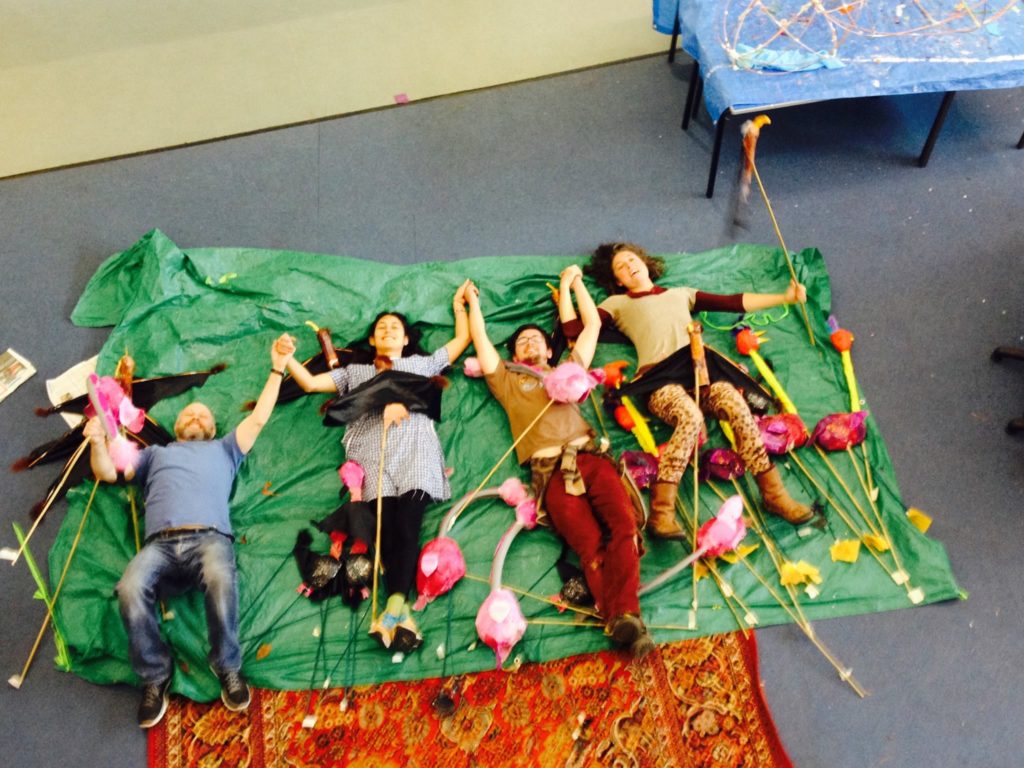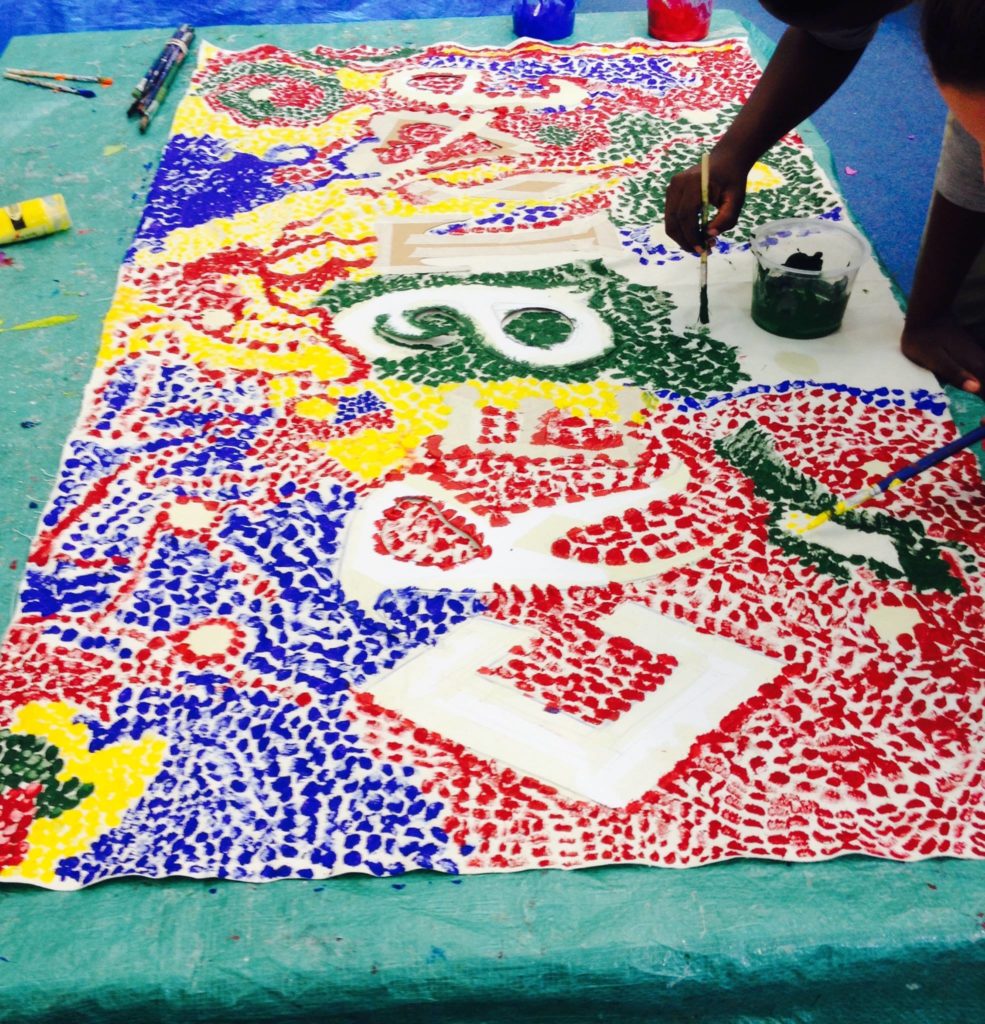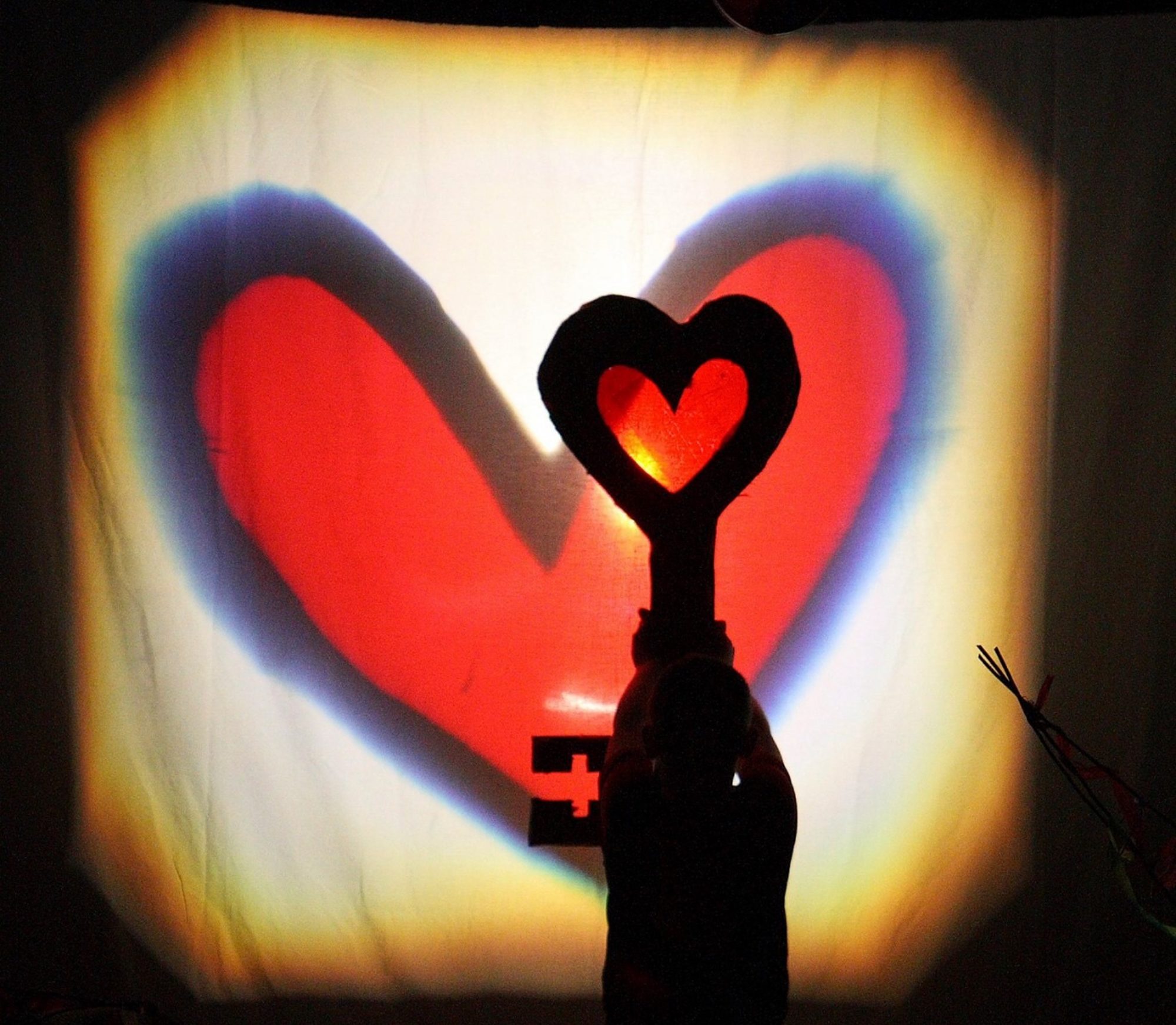
The use of travelling is to regulate imagination by reality, and instead of thinking how things may be, to see them as they are. Samuel Johnson
The meeting of two personalities is like the contact of two chemical substances: if there is any reaction, both are transformed. Carl Gustav Jung
The dynamic of a workshop depends on relationship. Not just the relationship in the space but those that go into making that space possible and they may not be physically present. At the turn of the century, I got a grant to interview workshop practitioners. The first person I interviewed was Wendy Greenhill. She had been in charge of educational outreach work at The Royal Shakespeare Company. It was a great conversation- a benchmark for the rest of series of interviews but, and there’s always an if or a but, we had bought a guinea pig for our son’s birthday.
The interview was recorded onto a newly purchased minidisc. Minidiscs were an intermediary technology between the analogue and the full on digital. I hadn’t used one before. I got home and my wife asked me to hide the guinea pig in our attic room. I picked up the fluffy ball of fur in one hand, had the minidisc in the other, put on headphones and pressed a button on the machine and walked up the stairs. Nothing played. I pressed again. By the time I had put the new guinea in place and got down the stairs, I realised that I had erased my first interview. I went into the front room and painted the air a deep purple with a loud cuss brush. I was so pissed off.
The heart of all my work is relationship. It surrounds the work, it informs the work and, in many ways, it is the work. One seminal moment in articulating this importance was that interview with Wendy. Luckily, she agreed to see me again. Here is a shortened version of our second conversation:
Interview with Wendy Greenhill on 26th February 2001
POROSITY
TG: And we are back again because I wiped the first interview. So, Wendy let’s start again where we started the first time – porosity. You said that the concept of porosity is very relevant to the workshop.
WG: It’s to do with structure really and having a structure but that structure being loose enough for participants to genuinely make a contribution so they take things in a different way and push the structure to develop a little bit more in one area than it might do in another area. If the structure is porous it has holes in it, which things can leak through and yet there is a vessel there, I suppose that’s my image. It’s to do with the confidence and the experience and trust. Trust in the form, trust in the event, in the encounter that’s happening. You as the animator are guiding something but your control is not too tight. I call that porosity.
Another image – as an animator it’s my responsibility to have the map and to know the map well but not necessarily to have decided beforehand exactly which part we are taking, or which path we are taking or which detours we are going to make. The Michelin Guide – 3 stars merit a journey and 2 stars merit a detour. I have to know my map of the area that we are aiming to cover in the workshop. I have to have a picture of it. So that then whatever is coming from the group, wherever their energy is, where their dilemmas are, what they are actually giving out in terms of body language and spark, what they are saying – all this helps decides when to spend more time on one road than another, go along one path rather than the path opposite to it. So that’s what I mean about knowing the map but not having sorted out every detail of the route and that’s sort of connected to the idea of porosity. There has to be holes in my structure for contribution from the participants.
TG: A word that interested me was encounter. Last time we talked about a circle; rounding the whole. Is it just process or is there product?
WG: There is product in a variety of ways. On the most straightforward level, when I do workshops what I am doing is working on Shakespeare. So the workshop is about encountering a play or part of the play. It’s about the people there but it’s not all about improvisation. It’s the people there and the text, so it’s about meeting, an encounter between the group who have chosen to be there, in one way or another, and the text. I am the mediator and animator, the midwife if you like, to that encounter.
At various points during the workshop there will be moments of performance. When a small group or individuals will be doing something to the others or at the end of the workshop. Performance can happen in a variety of ways, individually, in pairs, in groups or the wole group. Characteristically in a workshop so there is a mini piece of theatre that happens maybe more than once during it, that’s part of the process .
But I also think that the workshop as a whole becomes a performance. It is an encounter. The work is serious. Another image is an open circle in a workshop. Frequently in a workshop we stand in a circle, sit in a circle; the circle is the physical form that you often take. You often perform in a circle in a workshop. The circle is important but also the workshop itself it needs to have a sort of coherence and a structure, however complex and varied that might become. Again, it is about porosity and not having sorted out your route on the map, it’s an open circle so that something new happens and that really links to your question, that I think something really happens in a good workshop, something is created. It’s an event. Something new is experienced and expressed and fleshed out.
THE LEADER
TG: So there is a moment that you are looking for? I want to know what is the vessel? Is it the group? Is it the group leader? Is it the content of the workshop? What sort of mixture of those things is it? We were talking about risk and chaos last time.
WG: I can only express in images and I don’t want to be arty and farty about it.
TG: No, go on be arty and farty.
WG: Yes, I think it is all of those things, I think it is the person leading it but it is not about them it really isn’t about yourself as your finite individual. It’s about you wedded to the work. So, for the workshop animator it’s like any performer. I mean a performer in full flow, is both fantastically wonderfully himself or herself but also fantastically, wonderfully the part and it is kind of those two things.
TG: The skin?
WG: Yes, that’s right and it seems to me that a really good actor has a skin missing and I think that’s the thing for a good animator that you have to be very rooted and grounded. You have got to try and get your own energy flowing. Your energy is flowing in order to try and have the alertness and the sensitivity to really try and see where everybody else is and you must be very focused but you’re focused on, in my case, the encounter between the group and the Shakespeare text. I have to know that text fantastically well so that I am making discoveries about it myself in the workshop, in all its layers, in all its profundities and mystery and extraordinariness. That’s my homework in a sense – to know the text. I’ve got my bag of workshop techniques that get us into that text and allow leapings off and journeys from the text. Journeys is a good word too.
The quality of focus, the integrity of focus, the honesty and depth of focus of the animator somehow transmits to the group and, if it’s not about you and your ego, not me because I am actually awfully good at taking workshops, aren’t I a great personality, we’ve all met people like that; it’s not about self aggrandisement. It is rather because you have a passion for whatever it is. In my case it’s the text and everything it can mean. Everytime we make theatre, it’s new and it’s born. Shakespeare is born every time anybody encounters him/it wholeheartedly, physically, imaginatively with some sort of honesty, a purpose and endeavour and response. So what happens in a workshop is actually as valid as what happens that night on the main stage at Stratford. If it is undertaken seriously and sort of freshly and it is very difficult to use the word truth in terms of theatre, but truthfully, it’s not done because people are wanking. It’s not done because anybody is in any sense showing off going on an egotistical trip. It’s done because it is an encounter.
IDENTITY
TG: Isn’t that integrity and what makes it truthful the fact that there is a group and we are human because we are part of each other?
WG: Yes, absolutely.
TG: And that when it works, that sense of the social?
WG: Yes, you have got it. And I think it touches on to really, and I am going to sound more arty farty really, the nature of identity. I believe that identity is I, as a person, has the capacity and the desire to relate to others that we exist in relationship in all kinds of ways.
TG: It’s what the Rastafarins call I and I. That the we is the I and I?
WG: It’s what Martin Bauber, the German philosopher, theologian calls I and Thou. And I think that is what happens in theatre.
TG: I think there that carries through to the type of performance that comes out of workshop and I just wondered if you had any reflections on that?
WG: I suppose it is to do with one of its extremely precious qualities; which is that workshop is rooted in the group of people who are part of the workshop and the community to which they belong. Whether it’s a school or a community expressed in the people that go to an art centre or a village or whatever it is, it’s rooted in a community and in a time and in a place and it probably has a special moment as well. It’s not something that has to be trotted out every night or three times a week for two years. So it actually has, almost in its own way, perhaps a little bit like the festivals of Dionysus in Athens, something special. It’s been created by people, then for people. I’m referring to what I know of your work now, by people, for people in a time, a place, a moment and that is fantastically precious I think and it has giving theatre a real social purpose and role.
And that’s where theatre comes from and actually the main stage at Stratford glorious though that can often be, is not about that, it’s become a commercial product and what you create and what I create in workshops and when I am involved with bigger projects and as I become involved in community and what I will be involved in, like you, is not a commercial product but actually, well theatre.
TG: That old thing one plus one that you get in relationship is 3 and is it kind of exploring that third circle in a way, where you go? As a workshop leader what do you see as your fundamental role?
WG: You have to know the ground enough that everything that happens you can take it one step further, one step deeper. That’s both, in my sense, knowing the text but also knowing it so well that I can almost forget that I know it, and I am free and I am bold and I hope I am sensitive and empathetic so I can go mining. I really go mining with the group. And I think that is so important so that for a good workshop is where at the end you have discovered much more than you imagined you would or something really new has happened. You have had a new perception, some new extraordinary image about the play has happened and that people have had those moments.
TG: Somehow that quality of community creates a feeling that the group is more than the sum total of the individuals. Does that happen?
WG: I think that there is tremendous creative dynamite within the group that is greater than the sum of its parts and people are stimulated by that and relaxed by it but it really does need the animator to release it. I can remember a time when this happened. I was working on the Merchant of Venice with upper primary age children in schools around Newcastle when the RSC was on a tour up to Newcastle and the North-East. I had plotted Shylock’s story really and went in with my bits of scruffy paper, bits of text, I always use the real text, very cut down but it was all Shakespeare story. We looked at Shylock and that’s what the workshop was about. Without fail, and I went into about five or six schools working on this, for about half a day on each case, and complete mixed ability, mixed attitude, mixed types of children, mixed different learning styles, they all became really fascinated by Shylock. Because children at 10 or 11 can be very morally acute, fascinated by the morality. One of the most moving things was a class of really wide mixed ability where they were three boys who were statemented. All had great problems reading and speaking. In fact one of them had a slight speech impediment and they were very slow readers. If you are working with text, a good workshop is one where, even if you have your photocopied bits of paper, you are speaking it all. But you’re feeding your eye so much that you don’t have to be a brilliant reader to cope, that’s part of your job. At the end of this day, they all did a truncated version of that marvelous speech, “Hath not a Jew eyes, hath not a Jew hands….. “ It’s a tremendous plea for brotherhood and I asked at the end as you do, well let’s round this off, “who might like to do this for us, can anybody say these words?” And the whole class recited it. I didn’t want these boys who’d struggled but who’d been with the workshop. It had been hard for them. I didn’t want anybody to feel exposed but they all wanted to do it including these boys. It was incredibly moving, a boy who couldn’t read and a boy with a speech impediment as well, struggling to say these words. It had an integrity and a force and a meaning that was tremendous and all the other children in the group respected that.
TG: In a way it’s a quality of ritual by engaging the full human being, the senses, the intellect, the emotions?
WG: Yes.
TG: Celebration?
WG: Oh, absolutely, I mean why do we all want to do this? The rhythm of the work. The rhythm by-passes the front brain and engages the back brain and that’s terribly important. It’s the rhythm which releases the back brain and that is why people break through barriers and lose skin. It’s a celebration of human creativity and human generosity to each other. Yates had a lovely phrase which is, “ Logic is a butterfly, not an iron bird of prey”, something like that, and I think the logic of art and I think workshop is a form of artistic work, is about the serendipitous, the accident, the butterfly flitting, but you as the animator are able to weld it and I don’t mean tightly so that it’s over-tight. So, the more chaos, the more risk, the more unknown, the more exploration that you can have in the group in the workshop, the ritual, the more extraordinary it will be, the newer it will be, but your job as the animator is to somehow to contain that.
When I wiped our first conversation, it drilled into me an acute awareness of how precious a conversation could be and how it only happens once. The second conversation was great too but it could never be that first conversation. The same can be said for each and every workshop. It happens then and there and is unique.

